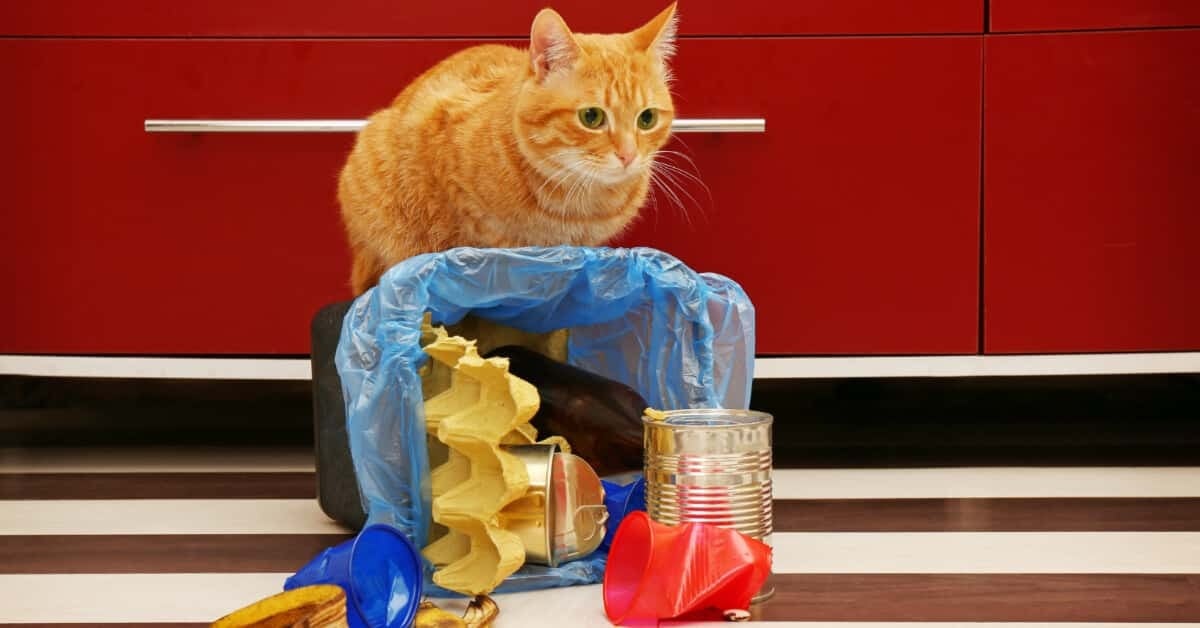Got a foul odor in your home? You've come to the right place.
Do you ever walk into your home and get hit by an extremely unpleasant scent? If you do, and you don't have a pet skunk, you can look to indoor odors as the source. We promise you there are SAFE ways to reduce or eliminate odors in your home. It's essential to attack the odors head on, rather than mask them with candles or spray. If you need a quick fix to make your home smell fresher, here are some tips:
- Change your air filter(s) on a regular schedule. The air in your home cycles through your air filter(s) multiple times per day. If your filter is not clogged or saturated, it will do a great job of capturing contaminants and pollutants that can make your home stink.
- Simmer a bowl of vinegar on the stove. This neutralizes odors rather than masking them, like burning vanilla or cinnamon do.
- Steam clean soft surfaces like drapes, curtains, and sofas. These items often get neglected in the cleaning process. Steam cleaning them is effective at eliminating dirt, dust, and, most importantly, odors.
- Deodorize your stinkiest rooms by placing a mixture of 3-parts water, 10 drops of citrus oil, and 1-part vodka in a decorative bowl. This is especially effective in rooms with strong foot or body odors like mudrooms and laundry rooms.
- If you, anyone that lives in your home, or any of your guests/visitors smoke, do so outdoors. We cannot stress this enough. Do. Not. Smoke. In. Your. Home. Cigarette smoke clings to all porous surfaces, including walls.
- Pets can add all sorts of smells to a home. Keeping up with their hygiene will go a long way in keeping your house smelling fresh.
- If you have a garbage disposal, avoid discarding carrot, onion, or potato peelings down it. Not only can they block up your disposal, but they cause a horrible stink when they begin to decay.
- Often times, your garbage can will begin to stink. A simple fix for this is washing it out with white vinegar and water to eliminate any leftover odors.
- If your laundry basket is filled with stinky clothes, consider sprinkling some washing soda onto the pile until you get around to doing the laundry, as this will neutralize the smells.
Those are some of the basic things you can do to freshen up the scent in your home. Now, if you feel like you may need even more information on how to eliminate home odors, we’ve got you covered. Here’s a complete guide to all things indoor odors and how to deodorize your home:
- What is an indoor odor?
- Dangerous odors
- Why does my room smell?
- How to get rid of home odors
- Clean your cleaning supplies
- Using an odor eliminator
- Maintain your pet’s hygiene
- Wash laundry
- Ventilate
- Keep flooring and surfaces clean
- Clean your kitchen
- Keep your bathroom clean
- Change your air filter
What is an indoor odor?
An odor that's inside, duh. Ok, this is a true statement, but there's actually more to it because science, ya know. Some odors are caused by low levels of volatile organic compounds (VOCs) in the air that humans can detect. A VOC is a chemical that can turn into vapor in room temperature conditions, and can potentially be harmful at certain levels.
Dangerous odors
First things first, if you notice any of these smells, it may be a sign of something more serious:
Fishy smell or burning rubber smell
This could be a sign of an electrical wiring malfunction somewhere in your home. The first place to look would either be appliances, a wall switch, or an outlet. If you do find that the smell is coming from your home's electrical wiring, it would be best to call an electrician. If the burning smell is strong and you can't find the source, we would recommend leaving the house and calling 911 in case there is an electrical fire in your home.
Sulfur or rotten egg smell
Typically, if you're smelling either of these odors, it's a sign of a gas leak in your home. The best thing to do in this situation is to leave your home, call 911, and then call your gas provider so that they can send someone over to fix the leak ASAP.
Musty smell
Mold is usually the culprit behind musty smells in your home. Most of the time, you should be able to handle mold on your own, but if it does turn out to be more of a problem, professional help may be necessary. How do you get rid of the musty smell in the house? Tackle the mold, of course. If you're looking for ideas on how to remove mold from carpet, look no further than this link right here.
Why does my room smell?
There are a lot of different reasons to ask "why does my room smell?" Here are a few different sources or indoor odors that you should investigate first:
- Pets
- Mold
- Dirty clothes
- Carpets
- Kitchen
- Bathroom
How to get rid of home odors
How are we going to get rid of these odors? Well, the answer isn't buying several different air fresheners and setting out a huge bowl of potpourri, although a little potpourri never hurts. Instead of deodorizing a room using air fresheners that release chemicals into the air and only mask odors, we want to remove odors at the source. You might ask, how do we do that? Look no further, we've got nine tips coming right at you to help remove indoor odors in your home.
Clean your cleaning supplies
Before you tackle those odors, make sure the supplies you use are free from odors themselves.
If the same sponge you used in February is still sitting beside your sink, it's probably a good idea to find a replacement. Depending on usage, sponges should be replaced at a minimum of once a month to ensure that you're not cleaning your dishes with unwanted bacteria. To make sponges last longer, run them through the sanitize cycle in your dishwasher to temporary stop bacterial growth.
Biodegradable sponges are also a more environmentally-friendly option!
Towels can also smell pretty bad if they're left damp for too long. Make sure towels are laid out to dry after use, so mildew doesn't have a chance to grow. If your towels do smell like mildew, throw them in the washing machine with either one cup of white vinegar or one cup of baking soda, no detergent necessary. We recommend washing towels once a week to make sure they always smell fresh and never need to go through the vinegar or baking soda treatment.
Lastly, keep regularly replacing the bag or emptying out the canister in your vacuum cleaner to keep it on the nice smell list. Rinsing it out with soap and water should also help remove some of the dirt that it has been collecting over time. Blockages from hair or fur should also be cleared out. If your vacuum has an air filter, make sure to follow the manufacturer's cleaning guidelines!
Use an odor eliminator
There are plenty of things you probably already have in your home that can naturally clear odors from the air. Some of the best odor eliminators are coffee grounds, tea, vinegar, oats, and baking soda. Leaving a bowl of any of these odor absorbers out in a room that's due for a little freshening up will help clear out the less-than-pleasant smells from the air.
Baking soda is probably one of the most useful tools in eliminating odors from your home. Instead of masking odors like air fresheners and candles, baking soda absorbs and neutralizes them. It has a reputation for being one of the best carpet deodorizers. Sprinkling it across any carpeted areas and allowing it to sit there for a few hours will have your carpet smelling fresher in no time.
Another place you should put baking soda? On your mattress! Your mattress is a trap for sweat, dirt, and dead skin. Definitely not the ideal things to sniff while trying to fall asleep. Just let it sit for several hours, then vacuum it up, and voila, you have many future better smelling nights of sleep ahead of you. Mattress covers are also great at keeping your mattress from collecting all of that nasty stuff. Especially if you have allergies, mattress covers can be a savior.
Pet accidents? Baking soda's got your back there too. Here's how to eliminate urine odor from your carpet:
- First, place a layer of paper towels down on top of the wet spot.
- Then add a layer of newspaper to absorb as much of the urine as possible.
- Next, sprinkle about ¼ cup of baking soda evenly over the affected area, and let it sit out for awhile. Overnight or around 8 hours would work, but the longer it's left out, the more effective it will be.
- After the baking soda has had time to neutralize the odor, vacuum it all up.
Baking soda and vacuuming is also effective in neutralizing odors from your pet’s bed.
An alternative to this method would be to mix together one cup of vinegar, one cup of water, and two tablespoons of baking soda. If you have a spray bottle, use that to spritz the urine stain with this mixture. Bam! Odor removed.
Maintain your pet’s hygiene
We know you love your fur babies, but their odors? Not so much. It's important to maintain your pet's hygiene to keep them and your home smelling fresh. Bathing your pets once a month should be the minimum, but a more ideal timeline would involve scheduling a bath for every one or two weeks. Yes, if they cooperate, cats too (*shudder*). If you need help with this, consult our blog about reducing cat dander for some kitty bathing tips. Other grooming techniques include regular brushing and nail clipping. Especially if your pet spends time outdoors, their fur and nails can harbor dirt and other unpleasant things from the outside world that can contribute to home odors.
Your cat's litter box can also be the source of a less than pleasant stench. Make sure that you're scooping it out at least once a day. About once a month, you should more thoroughly clean the litter box. Soap and water should do the trick as the scent of harsher chemicals can cause your kitty to avoid using the litter box altogether. Since litter boxes are often scratched, creating an ideal home for bacterial colonies, aim to replace them annually.
Keep your cat’s litter box in a place in your home that is well-ventilated so that odors don’t intensify and can naturally dissipate.
Last but not least, don't forget about your small animals! Your guinea pigs, hamsters, and gerbils need their cage cleaned out at least once a week to keep their living environment clean and odor-free.
Wash laundry
Do you have a hamper overflowing with sweaty clothes somewhere in your home? If you do, it's probably time to get a load of laundry going. That hamper is a breeding ground for bacteria and all the unpleasant smells that come along with it.
Since there is a lot of moisture concentrated in laundry rooms, it is very easy for odors to become trapped in the room. To keep your washing machine smelling fresh and free from mildew and mold, keep the door open between uses. This is especially true for front-loading washing machines. When the door is closed, the humid and airtight environment is the ideal environment for mold growth. So, to clean out your washing machine, pour either one cup of white vinegar or one cup of bleach into it, and then run it for one full cycle.
A lot of newer washing machines will do the work for you with a self-cleaning function, but the vinegar or bleach still help. Be sure to pick one or the other and never mix vinegar and bleach, this creates a toxic chlorine gas. Never mix vinegar with any chlorine product to avoid creating this toxic gas, or actually just never mix chlorine with anything. That's probably your best bet.
We're also just going to go ahead and mention those shoes. You know the ones we're talking about, the shoes that you've worn every single day for the last 6 years and are practically glued to your feet at this point. We've all got 'em, and odors? They've all got 'em.
Even though shoes bring in dirt, allergens, and yes, even C. Diff and E. Coli, only half of Americans will take their shoes off inside their homes, and less than 25% will ask their guests to take them off. Leaving your shoes at the door will for sure help leave odors at the door as well.
A trip through the washing machine should be enough to have your shoes smelling fresh again, but first, a little baking soda might come in handy. Three tablespoons of baking soda in each shoe overnight should help to neutralize odors before washing them the next day. If your shoes are made from materials like leather or suede, or have embellishments, machine-washing them most likely isn't the best idea. We'd recommend spot cleaning these shoes with a damp cloth instead. Always use your best judgment, but we'd say most sneakers are typically safe to be thrown into the wash!
Wash shoes inside of a pillowcase so that laces don't get tangled, and throw in a load of towels as well to muffle any loud noises. Only air-dry sneakers, however, as the heat from a dryer could cause damage.
Try to limit wearing your shoes to every other day, and stuff newspaper inside to absorb any lingering moisture or odors.
Ventilate
Ventilate, ventilate, ventilate. Proper ventilation is vital in ensuring that odors don't intensify. Make sure that you're opening windows and using fans generously so that any odors don't remain stagnant in one place and can naturally dissipate. If it's pollen season or if you live in an area that has a lot of smog, windows should remain closed. Other than that, outdoor air quality is typically better than indoor air quality. That's why letting in outdoor air will improve both the air in your home and circulation. Special attention should be paid to the ventilation of the kitchen and the bathroom where odors have a tendency to accumulate.
Keep flooring and surfaces clean
Start off by dusting the surfaces in your home from the top down. For harder surfaces like shelves and cabinets, a damp cloth or duster works better to actually remove the dust instead of just moving it around to a different place. For walls and painted surfaces, a dry sponge will be more effective.
Next, make sure that you vacuum your home thoroughly. Vacuum it again. And again and again. Keep vacuuming. Vacuum until you can vacuum no more. How do you deodorize carpet? You vacuum. This is because carpets are a magnet for pet hair, dander, mold, dirt, and dust, none of which smell particularly rosy.
For hardwood floors, regular sweeping and mopping should be enough to keep them odor-free. If you do notice any particularly strong odors, mopping with one part vinegar and one part water should do the job.
Clean your kitchen
Kitchens are a major source of all the smells. Smells like bacon, freshly-baked cookies, oooh and homemade pizza...sorry got a little carried away there. Unfortunately, your kitchen doesn't always smell this good. Cooking smoke, spoiled food, an iffy-smelling dishwasher, and the garbage disposal could all be contributing to kitchen odors. So, how do you keep kitchen odors at bay?
The first place you'll want to keep an eye on is the fridge. Often times, food can spoil without you even knowing it! Make sure that you're keeping tabs on expiration dates and throwing out food accordingly to avoid discovering last Thanksgiving's mashed potatoes in January. Your nose will thank you. If your fridge smells, but there's no rotten food in sight, keeping an open container of baking soda in your fridge will do wonders to absorb the odor.
Leaving the exhaust fan on while cooking is a good way to keep the space well-ventilated and as odor-free as possible. Grease from cooking will typically spread to the stovetop, counters, floors, cupboards, lights, and other surfaces nearby. A good wipe-down with a natural cleaning solution should be enough to reduce grease buildup and resulting odors. Vinegar, like baking soda, is one of those products that just about cleans anything.
If you notice a funky scent coming from your dishwasher, the culprit is probably the food that can get trapped in your dishwasher's filter, causing odors to occur over time. Cleaning out the filter regularly with hot water and soap is one way to prevent this from happening. Now for the odor? Place one cup of white vinegar on the top shelf of the dishwasher and run it once on the hottest setting. Then leave the dishwasher open to air dry and minimize the scent of vinegar afterward. Adding a drop of your favorite essential oil into the vinegar before sending it through the dishwasher can also keep your dishwasher smelling fresher.
Now, on to the garbage disposal. Garbage disposal odors can be the result of food scraps that didn't grind properly and are starting to rot or even a buildup of bacteria. Don't worry, this is typical and pretty simple to get rid of. Just cut up a few lemon or orange slices and put them through the disposal. This also works with a cup full of baking soda and a cup full of vinegar as well.
If you find that your trash can also doesn’t emit the most pleasant odor out there, baking soda will be your savior once again. Among other things, baking soda holds the title for best trash can deodorizer. Just sprinkle some in either the can itself, or the liner, and a fragrance improvement will be well on its way. Washing your trash can with water and vinegar is also an alternative method.
Keep your bathroom clean
Some hot spots to hit here are toilets, sinks, and showers. Where there's water residue, there's always a chance of mold. Keep your toilet clean by cleaning it at least once a week with toilet bowl cleaner. Pouring half a cup of bleach or vinegar into the toilet, then letting it sit for around 30 minutes before flushing is another way to keep your toilet odor-free. You can clean sinks and showers with bleach, or to keep things more natural, you can use a paste made from baking soda, lemon juice, and vinegar.
Around once a month, pour a mixture of half a cup of vinegar and half a cup of baking soda down all drains. This will help to both neutralize odors and reduce clogging.
So how do you keep your home odor-free? Basically clean. Shouldn't be too hard. That's what kids are for, right?
Oh, wait. One more thing.
Change your air filter
Have you ever smelled an air filter before? AMAZING, better than lavender. Just kidding, we've actually never smelled an air filter before. Hold on one second.
ok, after further research, air filters smell like... air? Do with that tidbit what you will.
Anywho, regular air filter replacements are a necessity in keeping your home smelling nice and pretty. Your air filter traps all kinds of particles like dust, mold spores, and dander that would otherwise contribute to an unpleasant odor in your home. To keep your filter working as efficiently as possible, you should replace it at least every three months. If you think it's time for a replacement, we happen to deliver some super cool filters straight to your door.
Well, there you have it, our guide to indoor odor busting. Now go grab that baking soda and a bottle of vinegar, no odor will stand a chance against you. Oh, and don't forget to sign up and get your first shipment free!
Topics:




